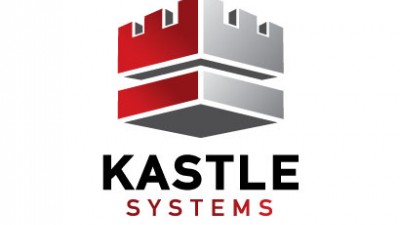The 4-Step Access Control Checklist For Property Managers, Owners
The most crucial component of any building security strategy has to be access control. The ability to manage who can — and who cannot — enter a property forms the backbone of all other security measures, including surveillance and emergency response.

The path to the right access control system is not always clear-cut. Building owners and property managers have to consider which system will be the most effective and reliable, have the system installed and then choose a company to manage its operations, including handling system breaches and responding to emergency situations.
“While owners and property managers generally know that they need an access control system, they’re not always able to execute on every part of a security plan,” Kastle Systems Senior Vice President Todd Burner said. “Selecting a security dealer can be a stressful and complex process, and they may not know where to begin.”
Bisnow spoke with Burner’s team at Kastle Systems, a leader in managed security, to assemble a four-step checklist for owners and property managers putting together an access control solution.
1. Design
Before they select a product, vendor or methodology, stakeholders need to define who and what they are protecting, and what they are protecting them from.
“Different access control products are developed for different security concerns,” Burner said. “We can tailor a solution to suit any specific property’s needs, but first we have to work out exactly what those needs are.”
Owners and property managers need to take stock of how many points of public access they have and define what level of restriction they need at each entrance, as well as what hardware will work best to suit their needs.
The solution that owners and managers choose will depend on the type of monitoring they want for each door, what data they want stored and what sort of backup fail-safe system they want in place.
“Newer, cloud-based systems that verify entry with mobile devices provide an enhanced level of security, and are growing in popularity and adoption,” Burner said.
Building owners and property managers must also decide how the security system will be monitored. They could employ dedicated on-site staff, but it may be more efficient and cost-effective to outsource that role to a third-party monitoring company.

2. Integrate
When choosing a new access system, owners and managers must often work around a pre-existing, building-wide system and multiple tenants’ security systems as well. Making sure that all the components of the access control solution function in unison is crucial to effective security.
“Property managers and owners can’t be afraid to ask vendors the tough questions about integration,” Burner said.
Building owners and property managers need to determine how other access related technologies like elevators, turnstiles and visitor management systems tie into the access control platform. Having one system in charge of all access means they can quickly grant it for new hires, dynamically provide access for visitors or temporary workers and deactivate access for departing occupants.
One of the challenges that these owners have, in contrast to tenants, is that there is no authoritative source for identities in a building. Building owners need to ensure that the system can grant or deny each user access to a curated list of spaces. It is not good enough for users to be given full access to every office and amenity, Burner said.
“For instance, you should be able to grant a user access to their own office and a shared gym, but deny them access to coworking offices and the bike room unless they have been approved for those areas,” Burner said.
3. Future-proof
Access control technology involves sophisticated equipment and software that needs to be regularly updated. To help ensure security is at its optimal level for the lifetime of their building, stakeholders need to design and install security systems with adaptability in mind and coordinate ahead of installation to determine how the system will be updated.
To make sure a system will continue to be effective, it needs to be able to accommodate emerging trends in security at a low cost.
“As recently as two years ago, some customers didn't think that mobile credentials would be something their tenants would care about," Burner said. "As it turned out, within a year they realized their assumption was off, but the technology they chose did not have a path forward to support mobile. Without the proper preparation, it can be costly to switch to accommodate the expectations of your tenants.”
4. Manage And Maintain
Even after stakeholders have selected a vendor and a security system, most of the actual user experience has yet to occur. The day-to-day monitoring, management and maintenance of an access control system is just as important to consider as the system itself.
Stakeholders need to consider the additional hiring and training of personnel as staff come and go and as security measures change.
To ease the burden on their own staff, many property managers choose to work with managed security firms, which can provide and install products, and monitor and maintain systems.
“With a managed security firm, property owners can get all products and services from one single security and technology provider for the lifetime of their property,” Burner said. “They receive better security, expertise, faster and more consistent responses, and in the end, they save on overall costs.”
A managed security firm acts as a strategic partner to help ensure a building’s security system performance stays optimal long after the initial installation.
This feature was produced in collaboration between Bisnow Branded Content and Kastle Systems. Bisnow news staff was not involved in the production of this content.

